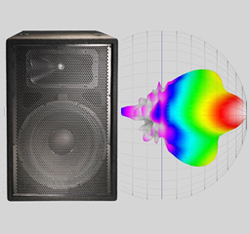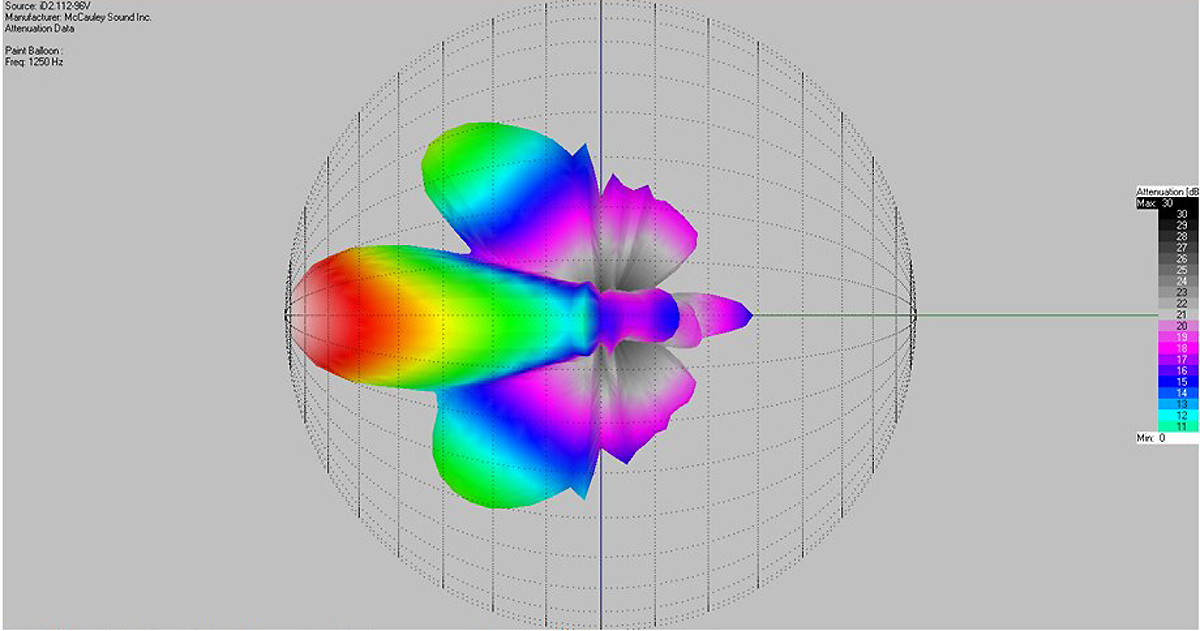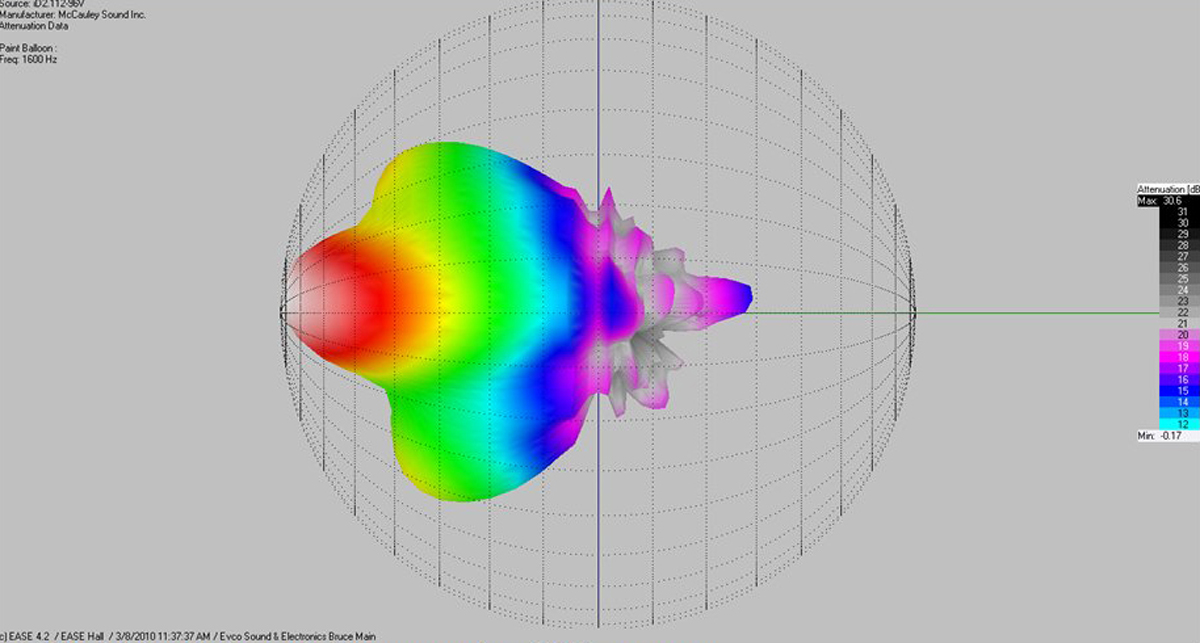
Dominate The Wavelength
There are multiple elements in a horn’s design that contribute to its ability to achieve pattern control at a given frequency. Some of them are throat geometry, length and flare rate.
But the most obvious factor is the size of the horn mouth. The same rules apply here as to the cone driver. Size matters. The horn mouth must be large enough to dominate the wavelength in question in order to provide complete directivity at that frequency.
So if a horn mouth is 6 inches wide by 3 inches tall it will be somewhat omnidirectional at 1,000 Hz. It will not dominate the sound wave until the frequency reaches about 2,000 Hz in the horizontal plane and 3,000 Hz in the vertical plane. It may provide a 90-degree by 60-degree pattern above 3,000 Hz, but almost certainly not at lower frequencies.
Cone drivers and horns by themselves are fairly predictable devices. But combining the two in close physical proximity can be quite challenging.
The first problem is physical offset. In a typical 2-way box, the devices are located one above the other ,and may also be at different depths. Even if we use delay to correct the time alignment between the drivers on axis, any other vertical angle will skew the time arrivals from the horn and the cone driver.
Because the bandpasses and vertical dispersion patterns of the drivers necessarily overlap in the crossover region it is probable that at any vertical angle that is off axis we will be hearing contributions from both drivers out of phase.

This means there will be lobes and nulls (Figures 4 & 5). This particular box was crossed over at 1,350,Hz with a symmetrical Linkwitz-Riley 24 dB slope.
These lobes will vary in direction and intensity based on driver offset and pattern control, crossover slope, and overlap and alignment delay settings, but they will always occur in multiple driver boxes with physically separated sources.
If a cabinet is laid on its side we get the same phenomena in the horizontal plane. Floor wedges, anyone? This is one reason there has been a resurgence in coaxial boxes.
Because there is no vertical offset between the sources, we only have to correct for the variation in depth between the acoustic origin of the cone and the horn driver, and that distance stays more constant with off-axis listening positions.

The trade-off is that many coaxial designs use the driver cone as the horn flare to guide the high frequencies, and while this may be fine for monitors or other near-field applications, more precise pattern control is often required for sound reinforcement duties.
Baffles, Boundaries
The final piece of the directivity puzzle is the cabinet itself and the boundary effect created by setting it on something. Fractional space loading is created when we decrease the space that a device is radiating into.
As we saw in Figure 1, low frequencies are omnidirectional, so when we set a loudspeaker on the floor, we effectively halve its radiating space at low frequencies. This produces an additional 3 dB of output (double the power) in the hemisphere that it is still exciting.
If the baffle on the cabinet is physically large enough versus a given frequency, it can act as a boundary to create half space loading. This is what is sometimes called “baffle step.” In modern cabinets, the baffle is rarely much larger than the driver that is mounted in it, because generally, priority is given to things like weight, truck pack, handle location, flying hardware, arrayability and profile.
Technology has gone a long way towards providing a ton of output and fidelity from small packages. But physics hasn’t changed. When it comes to pattern control, size still matters!
Bruce Main has been a systems engineer and front of house mixer for more than 30 years, and has also built, owned and operated recording studios and designed and installed sound systems.
